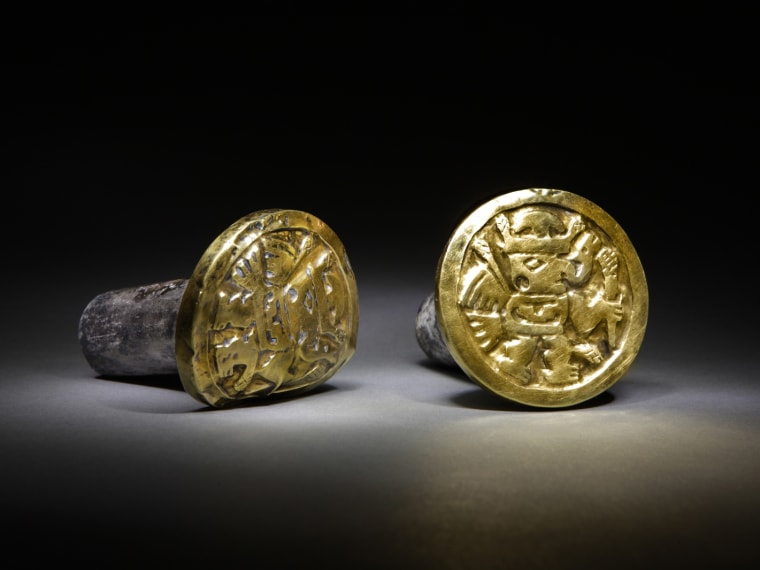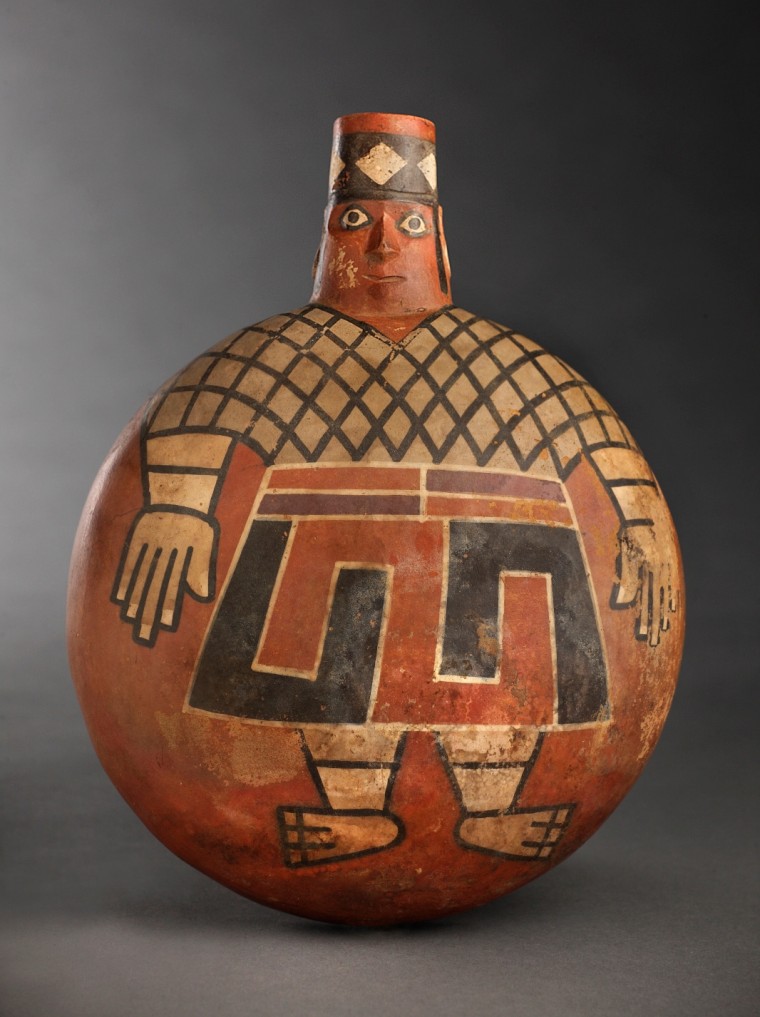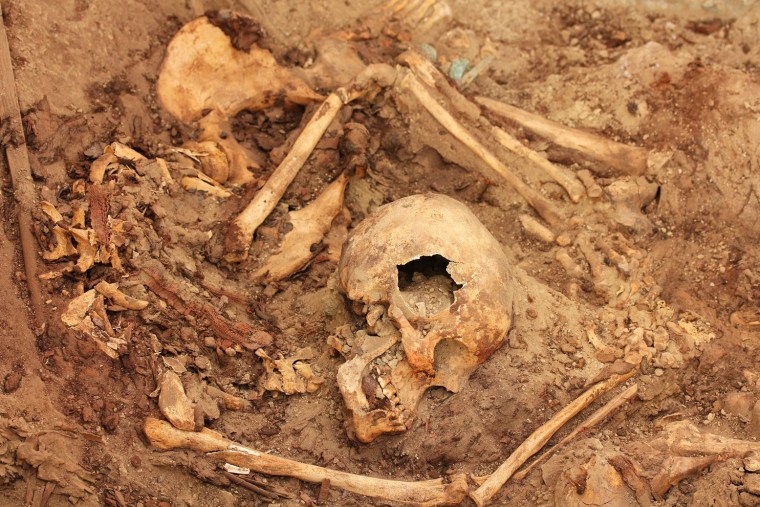
Gold and silver riches from more than a millennium ago have been found in Peru, within what appears to be the first unlooted tomb of South America's Wari civilization, researchers reported Thursday.
The dramatic find was unveiled at a news conference at the El Castillo de Huarmey archaeological site, 185 miles (300 kilometers) north of Lima. It's also described in a report from National Geographic, which supported the months-long excavation.
The tomb, which dates back to an era between the year 700 and 1000, could open up an unprecedented window on the mysterious Wari, a culture that predated the Incas. "We are talking about the first unearthed royal imperial tomb," Milosz Giersz, an archaeologist at the University of Warsaw in Poland, told National Geographic.
The mummies of three Wari queens were discovered — along with the remains of 60 other individuals, some of whom may have been human sacrifices.

Giersz and Peruvian archaeologist Roberto Pimentel Nita are co-directors of the project, which had to be conducted in secret to keep looters at bay. Grave robbers have been active at the 110-acre site for decades, but the Wari mausoleum was hidden so deep underground that it was apparently preserved untouched.
Three years ago, the archaeologists studied aerial photography of the region and spotted traces of a subterranean structure, sitting on a ridge between two large adobe-brick pyramids, National Geographic reported. Last September, Giersz and his team dug through a pile of rubble and uncovered an ancient ceremonial room with a stone throne and a large, carved wooden mace that apparently served as a tomb marker.
Beneath piles of loose stone, they found rows of human remains — most of them women, wrapped in textiles and buried in a seated position.
"The women were buried with finely engraved earpieces made of precious metals that once were believed to be used only by men," Reuters quoted archaeologist Patrycja Przadk as saying at Thursday's news conference.
Bioarchaeologist Wieslaw Wieckowski told Reuters that six of the skeletons were laid out unwrapped in the main chamber, and appear to have been human sacrifices for the mummified elite. "They were people thrown into the grave before the grave was sealed," he said. "They were lying on their bellies, in an extended position, and their limbs went in different directions."
In three side chambers, the archaeologists found the three queens and their treasures. More than 1,000 artifacts were recovered, including gold and silver jewelry, silver bowls, bronze ritual axes, an alabaster drinking cup, knives — and even weaving tools made of gold.
The tomb "is like a pantheon, like a mausoleum of all the Wari nobility in the region," Krzystof Makowski Hanula, an archaeologist at the Pontifical Catholic University of Peru who served as the project's scientific adviser, told National Geographic.

Archaeologists found traces of insects on the bodies of the queens, which indicates that they were taken out of their funerary chambers for display after their deaths. National Geographic said that suggests the Wari may have placed the mummies on the stone throne for ceremonial occasions, allowing the living to venerate their royal dead.
Little is known about the Wari, other than that they dominated a wide region of the Peruvian coast in the eighth and ninth centuries (and that they had a taste for beer). The El Castillo de Huarmey excavation could go on for years longer, filling gaps in one of the most mysterious chapters of South American history.
"The Wari phenomenon can be compared to the empire of Alexander the Great," Makowski told National Geographic. "It's a brief historical phenomenon, but with great consequence."
More archaeological discoveries:
- Mexico: Ruins of big Maya city discovered in jungle
- Cambodia: Laser scans reveal ancient urban network
- Honduras: Scientists share images of lost city
The Peruvian find is discussed in detail in National Geographic's report, "First Unlooted Royal Tomb of Its Kind Unearthed in Peru." The research is supported by National Geographic's Global Exploration Fund and Expeditions Council. This report also includes information from Reuters.
Alan Boyle is NBC News Digital's science editor. Connect with the Cosmic Log community by "liking" the NBC News Science Facebook page, following @b0yle on Twitter and adding +Alan Boyle to your Google+ circles. To keep up with NBCNews' stories about science and space, sign up for the Tech & Science newsletter, delivered to your email in-box every weekday. You can also check out "The Case for Pluto," my book about the controversial dwarf planet and the search for new worlds.